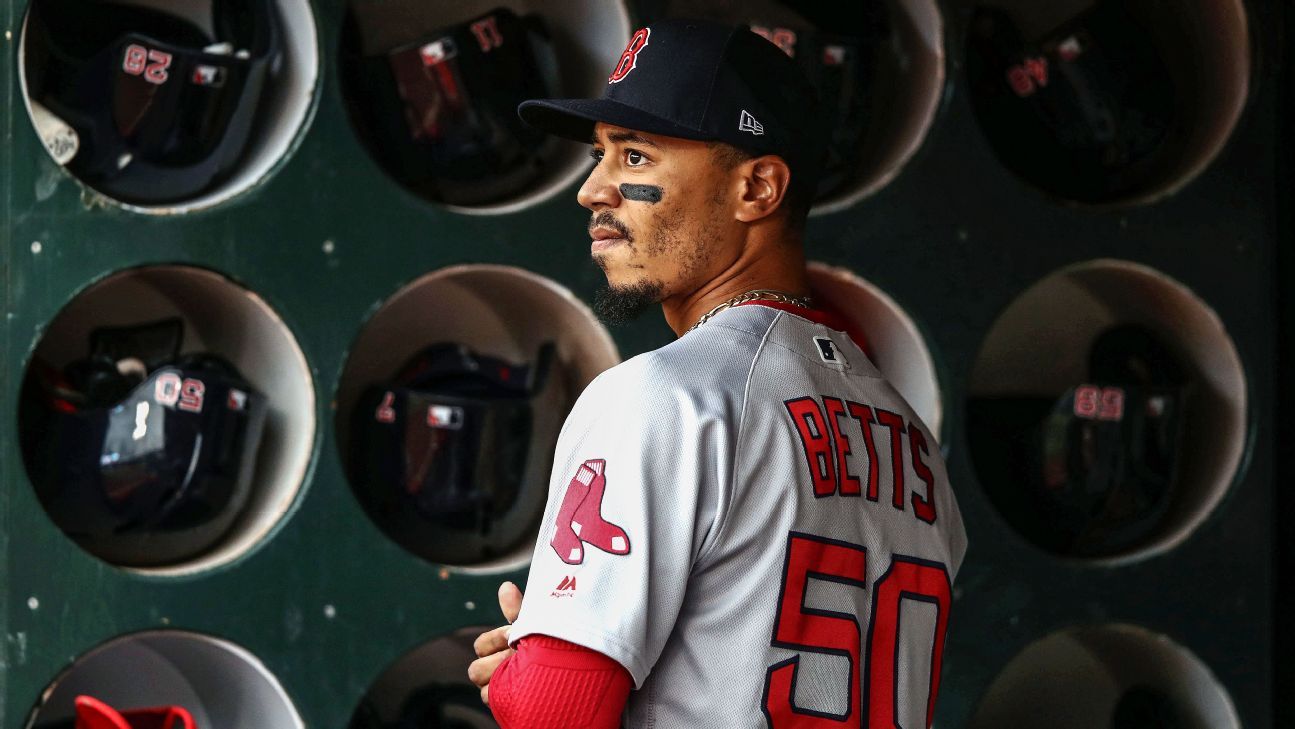For those in Boston panicking about the Red Sox‘s sequel to a World Series championship starting with a 3-9 record and the worst run differential in the American League, fear not. That thing in the distance — it’s not the sky falling. It’s just a smoke signal from luxury-tax hell to warn that it’s coming. Or wait. Maybe it’s actually the farm sending a message that the system is barren and needs help.
Pardon the gallows humor. The Red Sox’s debacle of a beginning to the 2019 season is bad enough as it is. That Boston has backed itself into a corner in other integral facets of building a sustained contender only worsens it — and explains why the capacity to change their current trajectory won’t be easy.
This is not to cast the Red Sox to where they resided in their previous incarnation, with three last-place finishes sandwiched around a most unlikely title. Any team with Boston’s resources can purchase an end around most issues, with the caveat that it could perhaps compound them to an even greater degree.
Perhaps it’s easiest to start there, with the Red Sox showering their largesse at a curious time. Less than a week after the first pitch of the spring he threw clocked in at 89 mph, Chris Sale agreed to a five-year, $145 million contract extension with the Red Sox. Sale has been one of the best pitchers in the major leagues for the better part of a decade. His two seasons in Boston have been beyond phenomenal. He is revered in the clubhouse, the organization, the city.
That said: The reaction around baseball was the awkward marriage of puzzlement at why they did it and giddiness that they actually did. Among the mileage on his arm, the shoulder problems that disabled him twice last year and the fastball velocity going AWOL, the warning signs were lit up like the Citgo sign. And the Red Sox had the perfect hedge: Sale was under contract for the 2019 season. If he looked good, rival executives figured, the Red Sox could extend him following the year. If not, he would hit free agency.
Now, on the heels of his third consecutive troublesome start, with radar guns registering UH-OH instead of a number, the Sale contract is, at least in the short term, a red flag, and not the kind that hangs at Fenway Park celebrating a title. Starting next season, they’re on the hook for $29 million a year for Sale — at least twice what he’d get coming off a substandard 2019 — plus $32 million a year for David Price and $17 million a season for Nathan Eovaldi, both through 2022. That’s $78 million a year for three starting pitchers — or more than the first-place Tampa Bay Rays, who have only three starting pitchers, are spending on their entire team this season.
Which is not to say the Red Sox shouldn’t spend money. They rake it in. Spending it to improve the team is admirable. It also has put the Red Sox in a very interesting position, one that has manifested itself with the continued free agency of their former closer, Craig Kimbrel. The Red Sox could use a good relief pitcher. Kimbrel has been that. Kimbrel could use a job. The Red Sox have one of those. Boston’s reticence to sign Kimbrel is for a few reasons — they don’t want to lose a potential draft pick they’d gain if he goes elsewhere, they were concerned with his end-of-the-season performance — and includes a concern about money.
Currently, the Red Sox are on the cusp of a second consecutive season flipping the bird at the luxury-tax threshold. Last season, Boston blew past the first, second and third levels of the tax ($197 million, $217 million and $237 million). This year, Boston is somewhere above $240 million, according to sources, and pushing up against that maximum threshold (at $246 million this year). If they exceed it, they’ll once again be docked 10 picks in the first round — Boston’s No. 33 overall pick this year got dropped to 43rd — and pay future overages at a higher rate.
The penalty is, in reality, not severe enough to warrant teams acting as though the luxury-tax threshold is some high-voltage barbed-wire fence. Except that draft-pick docking really does hinder an organization like Boston, whose farm system is teetering somewhere between meh and ugh.
Which wouldn’t be so much of a problem if it didn’t force the Red Sox into some awfully interesting decisions coming up. Between the extensions for Sale and Xander Bogaerts (at a much more reasonable six years, $120 million for a 26-year-old shortstop) this spring, Boston committed another $50 million or so a year to its payroll for at least the next half-decade. Today, with only Sale, Price, Eovaldi, Bogaerts, Dustin Pedroia and Christian Vazquez, the Red Sox have a luxury-tax number of $114 million next season.
Automatically add benefits and that takes it to $129 million. Plus an estimated $30 million in 2020 for Mookie Betts, which brings it to the cusp of $160 million. Then $10 million for Jackie Bradley Jr., and about half that for Andrew Benintendi going to arbitration for the first time, and it’s at $175 million for nine players. Who don’t include J.D. Martinez, because he may well opt out. Boston will need at least one starting pitcher, a first baseman, a DH and some semblance of a bullpen, and all under the $208 million number that year, so they can avoid staying at the repeat-offender base rate of a 50 percent tax. Maybe their two best prospects, Bobby Dalbec and Michael Chavis, can fill those power-hitting roles and make the potential loss of Martinez an afterthought.
The more reasonable thought, for a team that has money as free agency across the sport has petered out, is: They could afford this. They easily could afford this because they are the Red Sox and they regularly sell out Fenway and NESN ratings are bonkers and their business side is even sharper than their baseball side, which is saying something. They absolutely could afford to give Betts a deal for $40 million a year, if they wanted to ensure he stayed with the Red Sox for the remainder of his career, and just resign themselves to life above the tax. They wouldn’t be the first team — and with as much money as they’ve already committed going forward (even in 2022 they’ve still got more than $115 million committed), the possibility of Boston tearing down simply can’t and won’t happen.
The Red Sox’s dealings with Kimbrel don’t explicitly speak of tax dodging, because there are enough reasons not to sign him. With Betts, and even with Martinez, there aren’t any great reasons. As extension season drew to a close, the Red Sox understood what everyone in baseball saw: The paucity of top players on the market would place an added emphasis on locking up those already in your uniform.
Owners John Henry and Tom Werner and president Dave Dombrowski find themselves confronted with these realities now — and a much more acute one: Building a winner may be hard, but sustaining it is much, much harder. The Chicago Cubs left the 2016 season with a championship, a soon-to-be-ballooning payroll and a farm system on the downswing. Their Jason Heyward megadeal went sour and was joined by Yu Darvish and Tyler Chatwood’s free-agent contracts. Now the Cubs are over the threshold and without much, if any, payroll flexibility. As the great philosopher Christopher Wallace once said: “Mo Money Mo Problems.”
That is not actually true in baseball, of course. Money washes away many ills, and it’s at the heart of the Red Sox’s plans going forward. Will this start authorize them to spend this year? Or will it reinforce that this isn’t a team worth spending another dime on? It’s not even 10 percent of the way through the season, so if the line of thinking here feels unreasonable, that’s because it is. But management needs to plan for contingencies, too. And thus the questions above.
They’ll all be answered in due time, and those answers will be best viewed through the greater prism that governs baseball economics and particularly those of teams like the Red Sox, who are among the game’s royalty. Even when the sky is falling, all it takes is a few properly placed stacks of cash to put it back exactly where it’s supposed to be.

